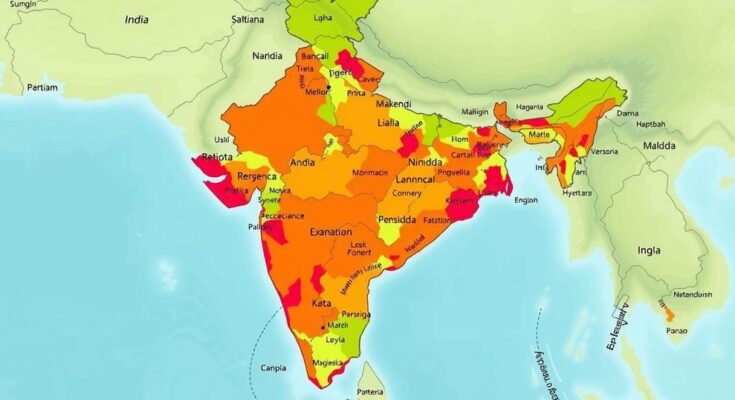Recent earthquakes in Pakistan, Tibet, and Myanmar have heightened fears of a major earthquake in India, particularly a potential “Great Himalayan Earthquake” with a magnitude greater than 8. Approximately 59% of India is at risk, with significant vulnerabilities in major cities and inadequate building protections. Historical data reveals substantial past losses, highlighting the urgency for enhanced disaster readiness.
In recent hours, a series of earthquakes have struck Pakistan and Tibet, contributing to the growing concern over natural disasters in the region. Notably, a 7.2-magnitude earthquake devastated Myanmar on March 28, leading to over 2,700 fatalities. Such events raise alarms regarding India’s vulnerability to significant seismic activities, particularly in densely populated cities.
Experts, as cited in a report by India Today, predict a potentially catastrophic earthquake in India, possibly a “Great Himalayan Earthquake” exceeding a magnitude of 8. This concern stems from the Indian plate subducting beneath the Sunda and Burma plates in northeast India, which could lead to severe earthquakes and tsunamis in the region. Moreover, Central and Peninsular India may face infrequent yet deadly intraplate earthquakes, highlighting that the nation remains ill-prepared for such a disaster.
Approximately 59% of India is vulnerable to earthquakes, with states like Himachal Pradesh, Uttarakhand, Bihar, and northeastern regions bearing the highest risks. Major cities, including Delhi, Mumbai, and Kolkata, are situated in perilous seismic zones. Alarmingly, many structures lack adequate earthquake-resistant features, escalating the potential for devastation, as collapsing buildings could result in higher death tolls than the quake itself.
Over the past two decades, India has incurred losses nearing $79.5 billion due to climate-related catastrophes. Historical data indicates the 2001 Bhuj earthquake in Gujarat caused damages worth $10 billion, while the 2015 Nepal earthquake, impacting northern India, resulted in $7 billion in losses.
The Himalayan region possesses a track record of powerful earthquakes. In the last 50 years alone, four major quakes exceeding a magnitude of 8.0 have occurred, including the 1987 Shillong earthquake (8.7), the 1905 Kangra earthquake (8.0), the 1934 Bihar-Nepal earthquake (8.3), and the 1950 Assam-Tibet earthquake (8.6).
The susceptibility of India to significant earthquakes, particularly following recent seismic activity in neighboring countries, necessitates immediate attention. With 59% of the nation at risk and major urban areas lacking adequate structural safety measures, the potential for disaster is alarming. Historical data underscores the severity of past events, emphasizing the need for preparedness and resilience in the face of such natural threats.
Original Source: www.livemint.com




